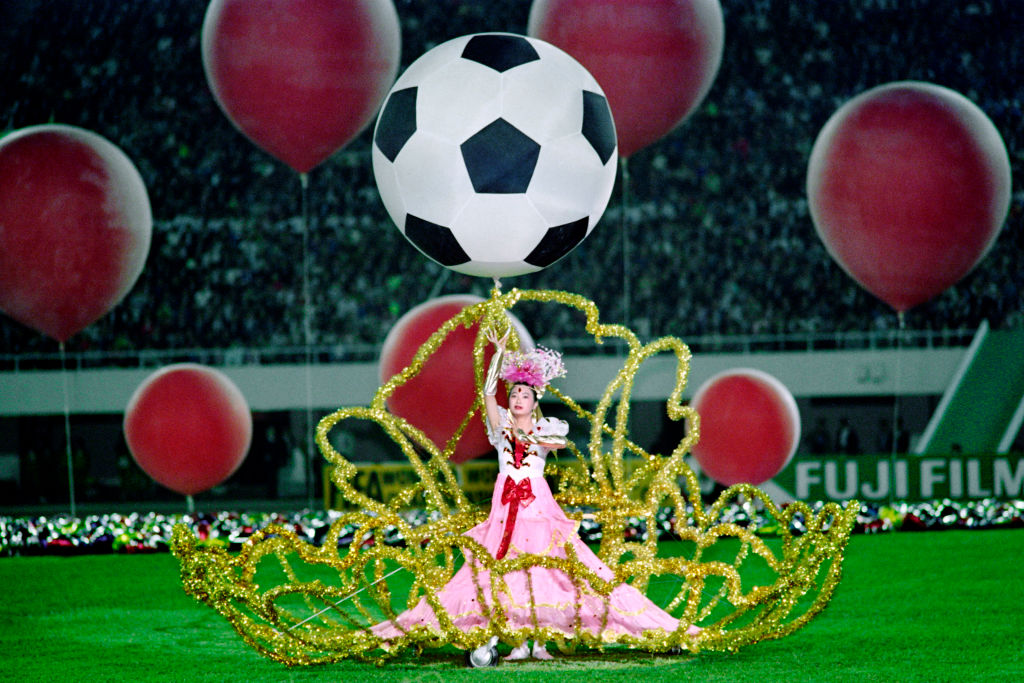The Women’s World Cup has come a long way from its unofficial predecessors half a century ago. The ninth official edition of the FIFA Women’s World Cup this July is on track to being the most attended standalone women’s sporting event in history, with more than a million tickets sold.
Before the 2023 tournament kicks off this summer, here are some things to know about the Women’s World Cup’s humble beginnings and its transformation into the must-watch sporting event that it is today.
Thank Italy and Norway
It took 61 years after FIFA established the first men’s World Cup for soccer’s international governing body to establish a women’s version, even though historical accounts show that women have been playing the sport since the early 19th century.
International competition among female athletes was already gaining traction before FIFA became involved. In 1970, the Turin-based Federation of Independent European Female Football (FIEFF) staged an unofficial women’s world cup, in which seven teams participated in Italy and Denmark became champion. The following year, the same federation staged another women’s tournament in Mexico, where six finalists took part and Denmark beat the host country in the final. FIEFF eventually folded in 1972, but women’s soccer leagues continued in the early- to mid-1980s through Mundialitos, or little world cups, which were smaller, invitational tournaments, which Italy hosted four times.
Then, in 1986, Norwegian delegate Ellen Wille spoke before the 45th FIFA Congress in Mexico—making her the first woman to do so—and demanded that it better promote women’s soccer.
FIFA, wary of lending the World Cup branding to what might turn out to be a failure, then staged a women’s invitational in China in 1988, bringing together 12 teams including a nascent U.S. team. The U.S. lost to Norway in the quarterfinals, and the Scandinavian country ultimately emerged the tournament victor. But it was a win for everyone, as the success of the event ultimately persuaded FIFA to officially endorse a first Women’s World Cup to be played in 1991, also in China.

The first tournament had low expectations
Despite how well the 1988 games went, doubts about the commercial success of a women’s “World Cup” still loomed, and FIFA initially named the tournament the “World Championship for Women’s Football for the M&M’s Cup,” incorporating branding from the candy manufacturer and the tournament’s sole corporate sponsor Mars.
All the doubts, however, were eventually dispelled. More than half-a-million fans attended to watch 12 national teams compete, and after Team USA beat Norway in the final before a crowd of 65,000 at the Tianhe Staidum in Guangzhou, FIFA’s then-president João Havelange wrote, “women’s football is now well and truly established.”
It started out amateur
Women’s soccer players also weren’t believed to be up to par with their male peers. At that time, women’s matches were 10 minutes shorter than men’s, which prompted April Heinrichs, captain of the U.S. team at the time, to comment that organizers “were afraid our ovaries were going to fall out if we played 90.” (Games were returned to 90 minutes in the following 1995 World Cup in Sweden.)
The athletes, similarly, were not considered or treated as professionals. Sports journalist Caitlyn Murray details in her 2019 book The National Team: The Inside Story of the Women Who Changed Soccer a number of cost-cutting measures. Murray wrote that the plane that carried the U.S. team had made several stopovers to pick up the Swedish and Norwegian teams before the 1991 game, and to drop them off after. Some players even said that their uniforms were hand-me-downs from the men’s teams, and while male players would get to stay at hotels, the women, who were only paid $15 per diem during overseas travel, all bunked in one room at a bed-and-breakfast. The Women’s World Cup didn’t have prize money either until 2007.

Much has changed since then. For the July tournament, $435 million has been budgeted for putting on the entire event, and unlike earlier stagings, competing teams will now have dedicated base camps across the two host cities: Australia and New Zealand. And up for grabs is $150 million—a massive increase from the $30 million prize pot during the 2019 Games (though still only a third of the $440 million in total prize money allocated for the men’s World Cup).
The U.S. has been the big winner, so far
The U.S. would go on to win three more Women’s World Cups following their victory in China. During the third edition of the tournament in 1999, they won in home territory, beating China 5-4 in a penalty shootout during the final in Pasadena’s Rose Bowl. Their next championship would come four tournaments later, in Canada in 2015. They also won the subsequent 2019 World Cup in France. The U.S. is entering this year’s tournament as favorites, and are a strong contender for a “three-peat,” which no national team has ever done to date.
Still, the most goals scored in World Cup history did not come from a U.S. athlete—or a man. It was instead a female athlete from Brazil: Marta Vieira da Silva—a striker better known mononymously as Marta—has scored 17 goals across five World Cup tournaments between 2007 and 2019. Marta, who is 37, will be taking part in her sixth World Cup this summer, hoping to add to her record and help the Brazil women’s team win their first World Cup.
Read More: Your Guide to the 2023 Women’s World Cup
Who have been the youngest and oldest players to appear in a women’s World Cup?
Ifeanyi Chiejine of the Nigeria Super Falcons debuted in a match against North Korea at the FIFA Women’s World Cup in 1999 at just 16 years and 34 days old, becoming the youngest ever player to take part in a Women’s World Cup. She appeared twice more, in the 2003 and 2007 World Cups, before retiring following the Beijing 2008 Olympics. Sadly, Chiejine died at age 36 in August 2019 due to an illness.
On the other end of the spectrum is Brazil’s Miraildes Maciel Mota—more popularly known as Formiga—who currently holds the title as the oldest player to take part in a Women’s World Cup. At 41 years and 112 days old, she joined Brazil’s Female Canaries in a quarter-final match against France in 2019. She has made history as the only soccer player—male or female—to have joined seven FIFA World Cups, beginning with the 1995 tournament, and she’s also the first female soccer player to have taken part in seven Olympic Games. Formiga retired from international duty in 2021.
More Must-Reads from TIME
- Cybersecurity Experts Are Sounding the Alarm on DOGE
- Meet the 2025 Women of the Year
- The Harsh Truth About Disability Inclusion
- Why Do More Young Adults Have Cancer?
- Colman Domingo Leads With Radical Love
- How to Get Better at Doing Things Alone
- Michelle Zauner Stares Down the Darkness
Contact us at letters@time.com